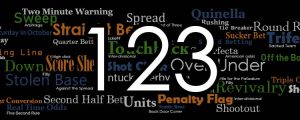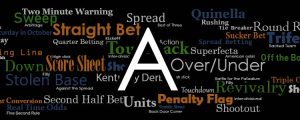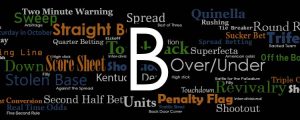If you’re an online or on-site sports betting lines enthusiast, you need to be able to fully understand what probability is if you want to maximize your chances of cashing in consistently, no matter the sport you’re wagering on.
Now, let’s get started…
In Depth Analysis On Betting 101 Understanding Probability
What is probability?
Most bettors think they’re ‘due for a winning streak after they’ve experienced a rough stretch, but the ‘I’m Due’ theory is not really true, inexperienced or casual bettors just like to believe it is. For instance, let’s say you flip a coin a half-dozen times with the result coming up heads’ every single time. Well, it’s only natural to believe that a ‘tails’ result is on the way in short order.
However, the fact of the matter is that each flip should be viewed as its own separate entity, meaning, no matter the outcome of the previous flip – or five – the odds say you’re going to have a 50-50 chance of tails coming up the next time you flip the coin.
This is one of the main reasons why chasing losses is bad business in the world of sports betting. The bottom line is that, no matter how many consecutive wins or loses you have had, it doesn’t make it the next result any more likely based on your previous results.
So, to recap. Odds indicate the chance – or probability – of an outcome happening within a specific event with all possible outcomes totaling 100 percent.
Two of the easiest examples to demonstrate the point are tossing a coin and rolling a dice:
Tossing a coin will produce two outcomes of equal probability. There is a 50 percent chance the coin will land on heads and a 50 percent chance that tails comes up.
Rolling a dice will have 6 possible outcomes of equal probability. You will have a 16.66% chance of each of the six numbers coming up.
Remember though, in the world of sports betting, oddsmakers get paid to produce difficult odds that focus on getting an equal amount of betting on both outcomes.
Rather than display probability, bookmakers convert the numbers into odds to reflect the chance of an outcome happening. Depending on where you are betting, these odds can be displayed as decimals (2.0), fractions (1/1) or American (+100).
Decimal – Also known as European, decimal odds reveal the total amount you will receive if your bet wins, including your initial wager. Simply put, for every $1 you wager at odds of 2.5, you will receive $2.50 back.
Fractions – Also known as British or traditional odds, reveal the amount of profit relative to your wager if your bet wins. Basically, for every $1 you wager at odds of 4/1, you will receive $4 profit and your $1 wager back.
American – Also known as US or Moneyline odds. American odds have two simple possibilities and are displayed as either + or -. For positive figures, the odds show how much money you will win on a $100 wager while negative figures show how much you need to wager in order to win $100.



